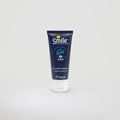Urinary leaks, pelvic pain, urination problems, fecal incontinence, vaginismus or even erectile dysfunction... 1 in 5 people, both men and women, suffer from these symptoms of pelvic floor dysfunction.
When the perineum does not have the right degree of muscle tone, problems can quickly appear, multiply and worsen... And when their severity is so serious that it degrades the quality of life and daily activities, action must be taken.
An easy, effective and natural solution then consists of re-educate the pelvic floor. In order to achieve better results, follow our advice for using a device perineal rehabilitation at home:
Hypotonic or hypertonic pelvic floor?
Overall, pelvic floor dysfunction can be divided into two main categories:
- THE hypotonic perineum : the pelvic muscles are too weak, too loose to properly support the viscera. This weakness also hinders the proper functioning of the sphincters. They are then no longer able to contract sufficiently to retain fluids and/or gases. The challenge is therefore to (re)strengthen the perineum so that it is strong and toned enough.
- A hypertonic perineum is characterized on the contrary by permanently overly contracted pelvic muscles. They may also tighten intermittently involuntarily, in the form of spasms. Perineal hypertonia is therefore another form of pelvic weakness. The solution is learn to relax the perineum, which also involves muscular reeducation.

These two types of dysfunctions lead to common problems. For example: the pelvic pain, urinary incontinence or discomfort during intercourse. On the other hand, other consequences are more specific to one or the other.
In addition, the muscles of the perineum are not always homogeneous. Thus, it is even possible to suffer from both hypotonia AND hypertonia.
But in both cases, the priority solution is often perineal rehabilitation. Of course, you will first have to go through the “health professional” box. Then consult a doctor, a midwife or a physiotherapist for a more in-depth examination of your situation.

Electrostimulation or biofeedback
Which pelvic rehabilitation device to use?
For more efficient work, you can use various perineal rehabilitation devices. This is a probe to be inserted into the vagina during the sessions. Depending on the device, its sensors will have various actions. And in addition, the probe also comes with software, the functionalities of which differ depending on the technique.
Overall, we distinguish these 2 very common medical methods:
Electrostimulation for very weak perineums
First, some professionals employ a electrostimulation device to stimulate the pelvic muscles via mini electric shocks. Most of these medical devices also benefit from health insurance coverage. Which partly explains their popularity.

Now, who is electrostimulation suitable for? This solution is rather indicated when the perineum is very weak and fragile.
But the major disadvantage of the perineal electrostimulator is that contractions are artificial and unintentional. In other words, the patient remains passive in her rehabilitation. In addition, it is best that it is used by a professional.
Furthermore, in the period of postpartum, the High Authority of Health (HAS) recommends avoiding the use of electrostimulation for perineal rehabilitation. Nerve damage is common after childbirth and the application of current can cause delayed nerve regeneration.
For more lasting and deep results, electrostimulation is therefore not the best option.
Take it to the next level with biofeedback
Then you have the method of biofeedback . This time the person will voluntarily contract your pelvic muscles and relax them. She must therefore learn to spot them, then control them. An awareness that ensures real long-term effectiveness.
Becoming actress and no longer a spectator of her rehabilitation, the patient will thus be able to maintain her perineal shape. By extension, she will also improve her intestinal and bladder functions by learning to strengthen and/or relax his pelvic muscles.

In fact, the biofeedback probe uses sensors special and sends the information via an application. This feedback on muscular activity then allows the software to suggest variations of pelvic exercises to optimize progress. With practice, the woman perfects her sensitivity and control of perineal function.
Which device to choose for perineal rehabilitation at home?
Knowing all this, biofeedback is especially suitable for strengthening of a weak but not fragile perineum. With a view to intensification, it will notably follow a first stage of rehabilitation using electrostimulation.
In addition, these devices can be used both at home and in a medical office. To help you choose, here are the main differences between the two perineal technologies, biofeedback and electrostimulation.

Supplementing Kegel exercises with biofeedback
As part of strengthening the perineum, Kegel exercises remain the best basis for work. During a session, you gently contract your pelvic muscles, hold the contraction and release. This several times in succession, with varied rhythms and durations.
But the main concern is the monotony of this type of training. These repetitive, static and unstimulating movements are quickly boring. And when you have to do them for at least 10 minutes a day to get results... Motivation melts like snow in the sun. In addition, it is sometimes difficult to know which variations to do at what time to be truly effective.
That's the whole point of a biofeedback probe to complement Kegel exercises. With a real-time feedback on a screen, it provides you with information on your performance. And on the other hand, its software offers you a tailor-made training program according to the needs of your perineum.

Biofeedback: which home perineal rehabilitation device to choose?
First, make sure the vaginal biofeedback probe has quality sensors. They must be sensitive enough to accurately measure the activities of your pelvic muscles.
Then, make sure that its software is based on a effective method, with scientific validation. In addition, its use must be intuitive, accessible and pleasant. Discover all our advice to choose your home perineal rehabilitation device.

In addition to your in-office rehabilitation sessions, opt for the comfort of the Emy solution to continue your exercises at home. Our home perineal rehabilitation device includes a precise biofeedback probe, coupled with a fun mobile app.
Learn more about the Emy probe
To motivate you and help you progress in strengthening and maintaining your perineum, our Emy solution:
- shows your perineal activity live;
- tracks and records your progress;
- adapts the exercises to your level at the moment;
- offers a fun and stimulating approach, which makes you want to do your workouts;
- offers reminders to think about each session.
There you go, you now have no more excuses to abandon your perineal rehabilitation. With or without a device, there are multiple home solutions, find the one that motivates you the most!







